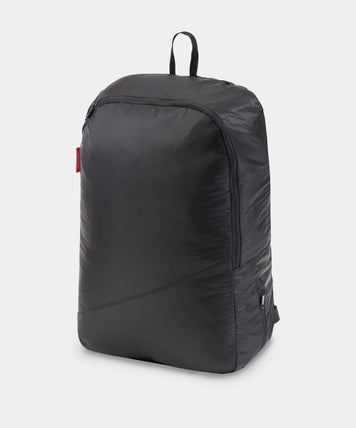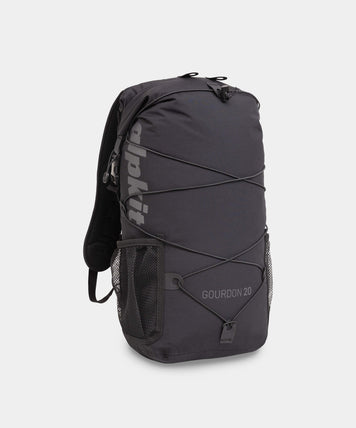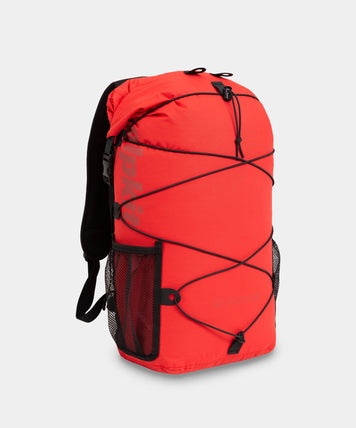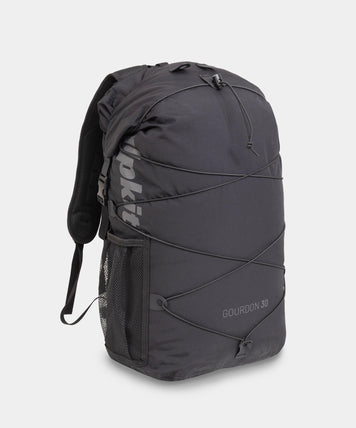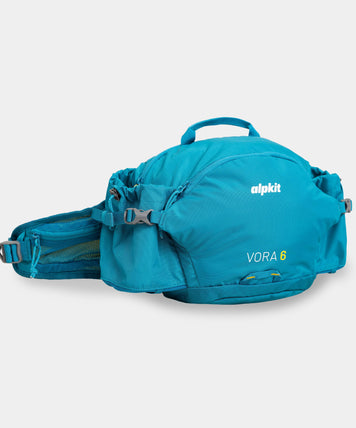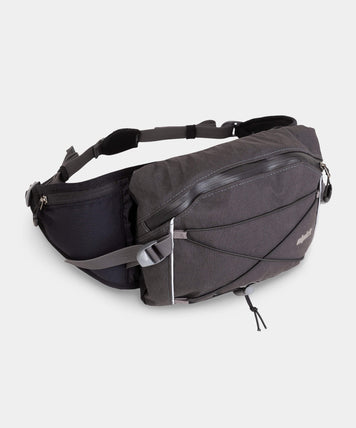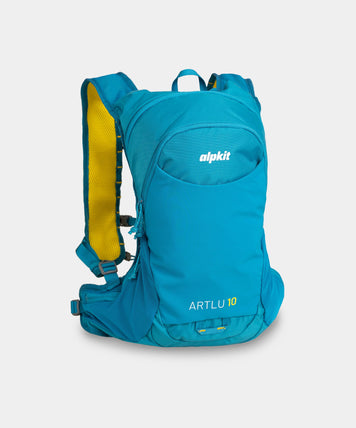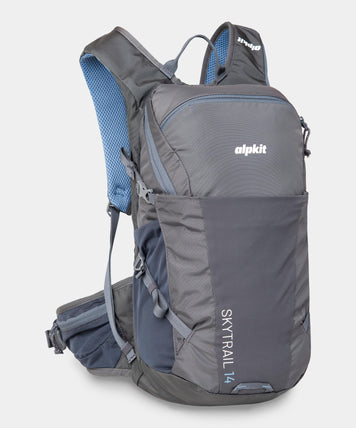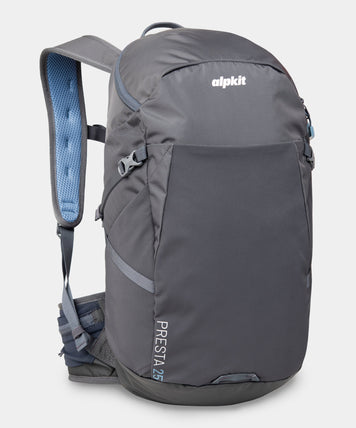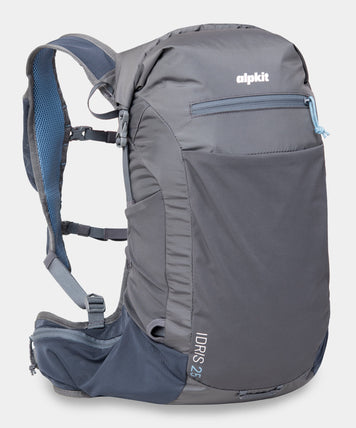
Edmund Hillary first summited Mount Everest wearing a Shetland jumper. Let’s just dwell on that for a moment. A woolly jumper.
We're so used to seeing Himalayan climbers wearing space-age down body suits and boots that look like they’ve been designed for lunar exploration that it’s difficult to comprehend at first. Granted, Hillary’s jumper was a custom-made prototype using wool solely from the neck area of Shetland sheep, spun into the finest of yarns... But the simple fact remains: the highest mountain on earth was first climbed in a humble woolly jumper.
Natural fibres – particularly wool – formed the basis of cold weather clothing from the Golden Age of Alpinism and Heroic Age of Antarctic exploration right through to ground-breaking climbs in the 60s and early 1970s. Flipping through grainy film shots featuring the likes of Joe Brown, Don Whillans, Chris Bonnington and Gwen Moffat – pioneering figures in British climbing and mountaineering – one thing stands out: the complete ubiquity of the woolly jumper. These were sheep-powered feats of human endeavour.

Rejuvenating the Jumper
Modern synthetic fabrics are lighter, more durable and faster drying, leading to polyester fleece and fill completely replacing wool as the midlayer insulation of choice. However, many of its properties are still to be improved on; we’ve already returned to using wool, specifically Merino wool, as a high-performance base layer. Wool never stopped working, we just stopped wearing it.
We wanted to produce sustainable natural fibre alternatives to synthetic mid layers, so we're particularly excited to introduce lambswool jumpers to our range. Inspired by the climbing clothing of the 1950s and 1960s, they're named after places in Eryri (Snowdonia), an area steeped in climbing and mountaineering heritage. The Pen Y Gwyrd hotel at the base of Yr Wyddfa (Snowdon) was the base for Hunt’s party (pictured below) while they trained for their successful Everest bid.
To challenge synthetic's superiority, we’ve raided Design Manager Ronnie’s dissertation materials, looking into wool’s incredible achievements and unrivalled technical benefits...

Where There’s a Wool, There’s a Way
As a niche pursuit in the mid-19th century, mountaineering lacked the highly specialised clothing we now take for granted. However, Victorian climbers had already established that cotton was a poor material for outdoor use. Recognising its chilling effect, they opted for silk or woollen underwear, wool flannel shirts and woollen tweed shooting jackets called Norfolk jackets. By the time of Edward Whymper’s ascent and descent of the Matterhorn in 1865, marking the end of the Golden Age of alpinism, most of the Alps’ 4000m peaks had been climbed, and all in primarily woollen dress.
Polar explorers in the later half of 19th century attempted to harness the clothing technology of the local Inuit populations, a layered combination of animal furs and skins honed to perfection over the centuries. However, furs were unsuited to man-hauling sledges as they prevented sweat from evaporating, absorbed moisture, and froze, proving impossible to dry out in the harsh conditions.
With this realisation they turned to several layers of breathable wool, worn under a windproof jacket made from gabardine, a treated cotton fabric manufactured by Burberry. This was the genesis of the modern layering system and would go on to be used on an ill-fated assault on the world’s highest mountain.



In 1999, George Mallory’s body was finally discovered on the north face of Mount Everest. It was a long-held belief that his fatal 1924 attempt with Sandy Irvine had failed due to the inferiority of their clothing equipment. A team of forensic textile experts from four UK universities used clothing fragments from Mallory’s body to recreate his equipment and to try to disprove this theory.
Mallory was found to be wearing seven or eight layers of tailored silk and wool garments beneath two windproof gabardine layers. Tested on Everest by mountaineer Graham Hoyland, this layering system, state-of-the-art for its time, was found to be highly effective at trapping insulating warm air. They concluded it would have been perfectly sufficient to reach the summit as long as Mallory and Irvine had kept moving.
It was also found to be around 20% lighter than modern summit clothing, challenging perceptions of ultralight modern materials. Whether they made it to the top or not remains a mystery but, as proved conclusively by Hillary 30 years later, there’s no denying it: wool works.

Wool, Wondrous Wool
Ripping yarns of wool’s past glories aside, why would you choose wool today in a market abounding with such a proliferation of technical fabrics? You may have read that wool is insulating, moisture managing or even temperature regulating but it’s not always easy to figure out what these terms mean. They certainly tell you nothing about fibres that have undergone thousands of years of evolution to help Ovis aries (that’s sheep to you and I) withstand the harsh extremes of upland weather. The more ewe delve (sorry) into wool, the more wondrous it gets.
Insulating
Wool fibres have a natural a crimp, a waviness to the fibre which creates lots of tiny pockets of insulating air when layered against other wool fibres. The finer the wool fibres, the greater the crimp, and the more air pockets that are created. It’s this property that gives incredibly fine Merino wool fibres their outstanding warmth-to-weight ratio.
Moisture Managament
Wool is a naturally hygroscopic fibre (hygro-what?!). This means that it absorbs moisture vapour from the surrounding air, into the structure of the fibre itself. Wool keeps your skin surface dry by absorbing your body’s moisture vapour before it can turn into sweat, and then releasing it into to the outside air. With this process wool can absorb up to 35% of its weight in water before it starts to feel damp to the touch, negating any clamminess. Wool will only wick liquid sweat like synthetic fibres when it can’t absorb any more moisture.



Temperature regulating
To create a moisture balance, wool absorbs water vapour from the humid microclimate next to your body and releases it to the drier outside air. When you overheat and produce more sweat, wool increases the rate of evaporation to keep you cool. However, when you cool down and produce less sweat, wool slows the rate of evaporation, preventing the instant temperature drop you usually get when you stop exercising.
Warmth when wet
The cellular structure of wool fibres that produce its crimp also give the fibres a high degree of elasticity. This elasticity helps them to retain their structure even when wet, maintaining the insulating air pockets between fibres. Also (now this is the really clever bit), when wool absorbs moisture, the water molecules chemically react with molecules in the wool fibre’s core, releasing heat (an exothermic reaction for the chemistry buffs). This property guards against rapid cooling from sweat evaporation in cold weather.
Water repellency
The outer casing of wool fibres have a waxy coating, making wool slightly water repellent without restricting its breathability. As well as providing a degree of shower resistance, this reduces the risk of staining too.
Odour resistance
Wool’s breathability helps to resist odours by preventing the warm, moist conditions that bacteria thrive in. It also absorbs odour molecules into its internal structure, trapping them within the fibre until washing.
Sustainable
Wool is 100% natural, biodegradable and renewable (sheep produce new fleece and sheep produce new sheep... usually in spring... they gambol... you know all this...).

Don’t Follow The Herd
Phew, that was a lot of science... still here? When you stack up all wool’s benefits, it really is as relevant a material today as it was for Hillary in 1953. Odour resistance is certainly something more than a few of us could do with after several days of use! Gearheads dressed head-to-toe in the latest technology may well sneer at your woolly jumper. But rest assured, you’re in good company. Wool works.
Rucksacks and backpacks


